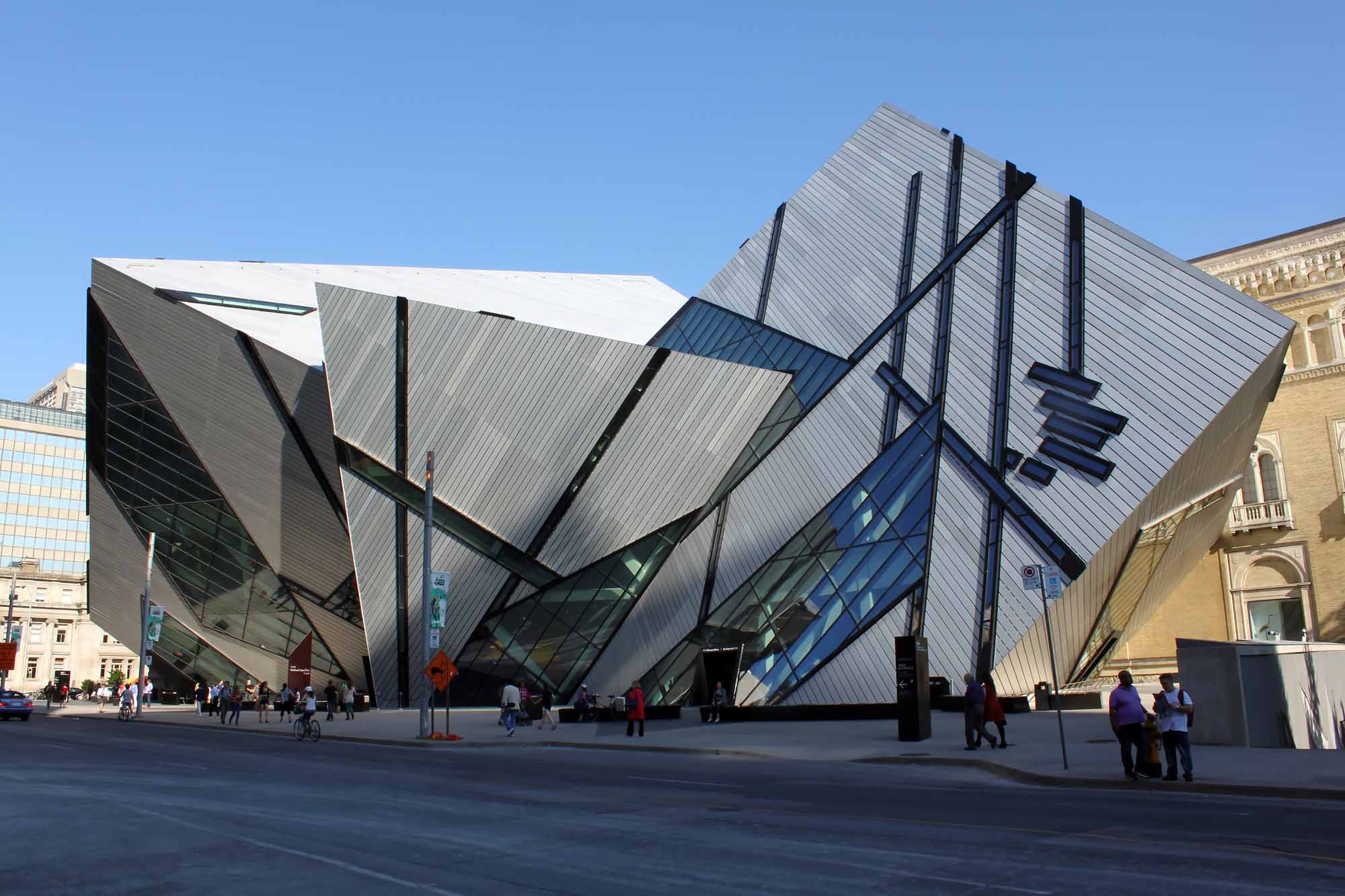The history of the ROM’s modern architecture
Hootan Ghaffarisaravi CONTRIBUTOR
Photo: THE CANADIAN ENCYCLOPEDIA
It was a warm Saturday in June 2007 when our city’s largest museum had a street party to unveil its latest architectural innovation. High-ranking political officials and idols from Canadian pop culture attended the bright event to mark the beginning of the Royal Ontario Museum’s (ROM) Crystal Age. This era was dedicated to the newly constructed series of interlocking geometric crystals that form a massive portion of the museum. Against the backdrop of Toronto’s cityscape, the Michael Lee-Chin crystal became the newest addition to Toronto’s architectural history.
In 1914, before the ROM had those famous giant crystals growing out of it, people went to the museum only to experience dark halls and hidden treasures inside a massive stone building. While there were renovations that took place up until 2002, nothing truly connected the museum to the quickly modernizing city or offered easy access between its exhibits. The old building was arguably more popular for the weddings held inside it than the spirit of the museum itself. Yet, it was a family wedding that took place in the 2000s at the ROM Café where Daniel Libeskind, the crystal’s architect, toured the exhibits in the building. Shortly after, Libeskind sketched away on a napkin, outlining the design that would serve as the inspiration for the structure today. He was quoted later as saying, “Why should one expect the new addition to the ROM to be ‘business as usual’? Architecture in our time is no longer an introvert’s business. On the contrary, the creation of communicative, stunning, and unexpected architecture signals a bold re-awakening of the civic life of the museum and the city.”
The message behind this napkin was clear to him from the start. By pushing boundaries and connecting people to the city through accessible walkways and magnificent shapes, Toronto’s museum was kept in the spotlight. Such innovation came to fruition after Michael Lee-Chin, a philanthropist with a love for arts and history, donated $30 million to the ROM. This earned him a place in the city’s history as the namesake for the famous Michael Lee-Chin Crystal.
With the ROM being North America’s fifth largest museum, its new modernized design truly made it look the part. Made of 25% glass and 75% metal, the structure became a downtown Toronto icon. The skeleton was formed from 3,500 tons of steel and 38 tons of bolts, and cement was poured into it to hold the shape. Prior to the grand opening, Libeskind said in an interview that, “Architecture at its deepest sense is about creating space that has never been there, and giving people a kind of vista… as if one would see the city in a different way through this new space.”
Out of 50 firms that were interested in designing the ROM’s new look, the former musician-turned-architect whose napkin drawing became the massive crystal structure that we know today was chosen to handle a $30-million donation from a rich lover of history and arts. In this way, even though it was Michael Lee-Chin’s name and funds that gave rise to the structures, it was Libeskind’s café napkin and his skillful imagination that truly brought such a project to life.


